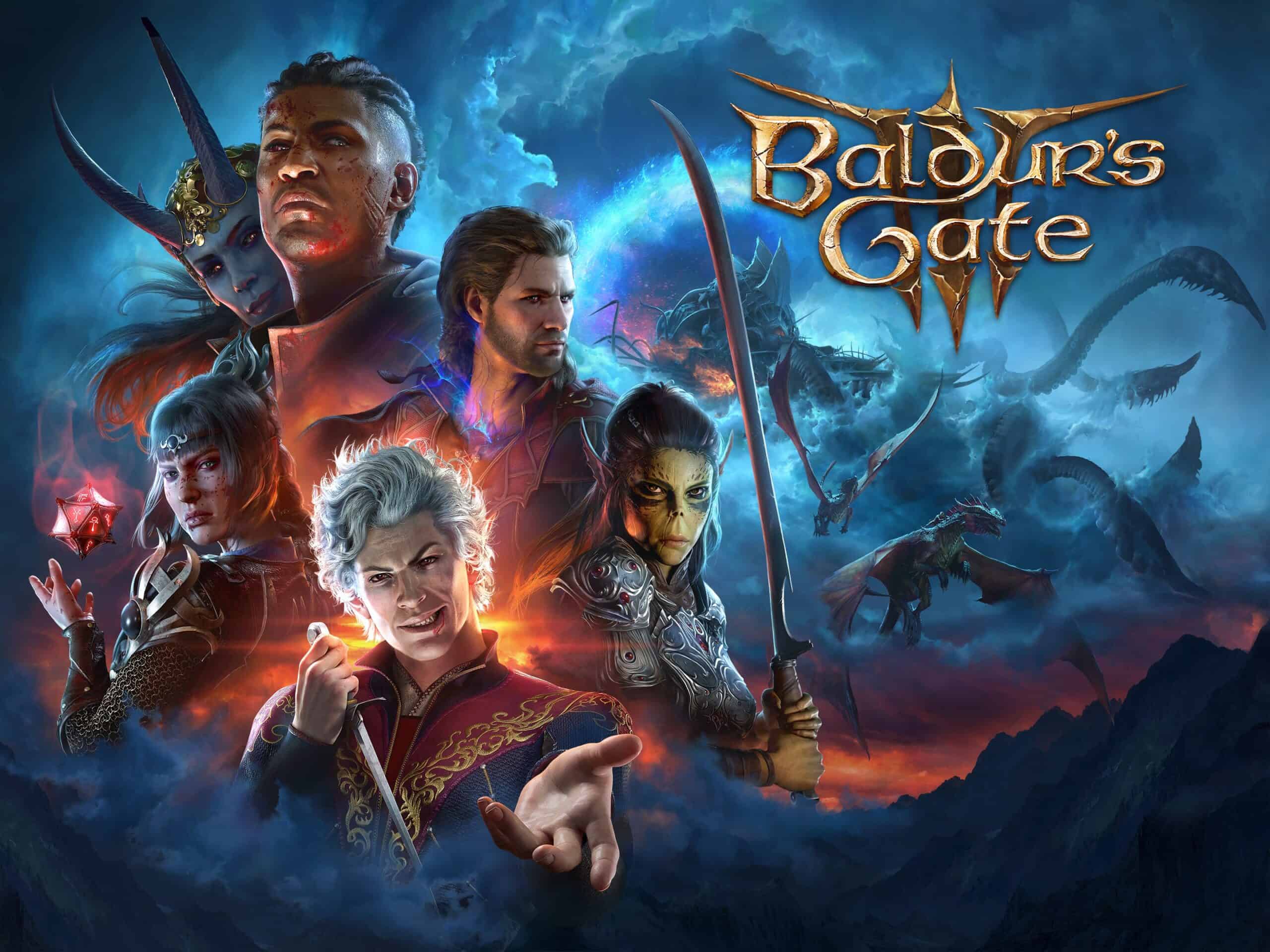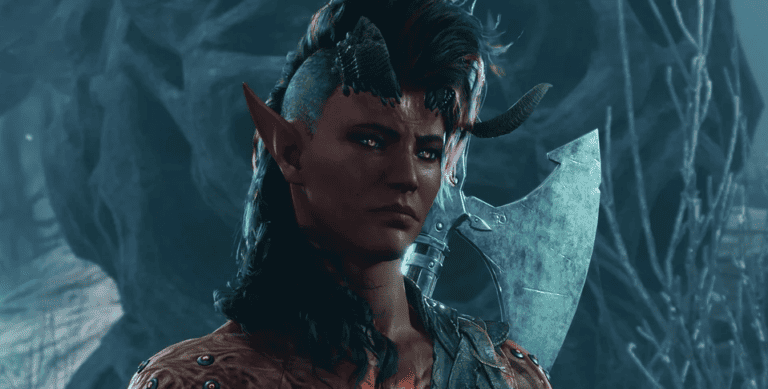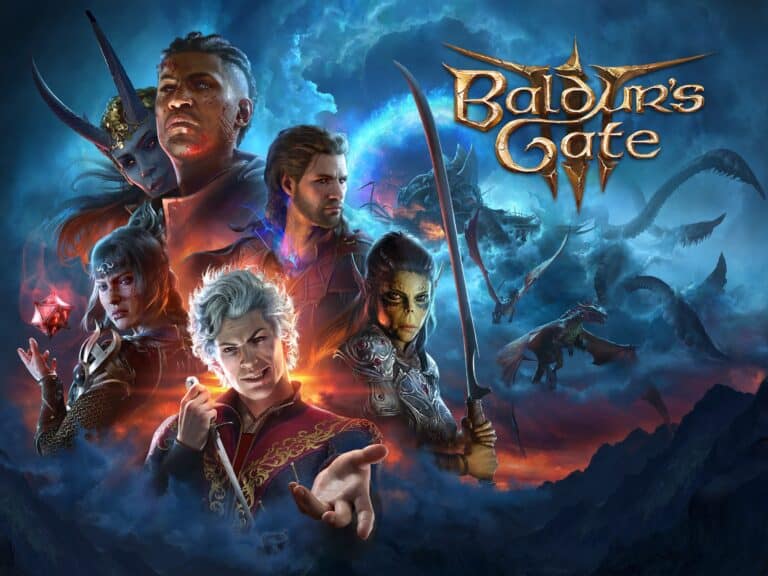Baldur’s Gate 3 is a rich, story-driven role-playing game that challenges players to forge their own path in a fantasy world. At the core of your personal adventure in Baldur’s Gate 3 lies the selection of your character’s class. Each playable class offers a distinct set of abilities that shape the way you engage in battles and interact with the game world. Whether you prefer the brute strength of a Fighter, the arcane mysteries of a Wizard, or the divine powers of a Cleric, Baldur’s Gate 3 offers a class that fits your playstyle.
Choosing the best class for your journey can be a thrilling decision as it determines not only your combat strategies but also impacts the options available to you when facing puzzles and dialogue encounters. The game provides a variety of classes to choose from, each with unique specialties and subclasses that unlock further skills, ensuring that every player can find a class that feels tailored to their preferred approach to gameplay.
Everything You Need to Know About Classes in Baldur’s Gate 3
Baldur’s Gate 3 gives players a thrilling chance to customize their characters through a rich selection of classes derived from the Dungeons & Dragons universe. Here’s a breakdown of the available classes, what defines their gameplay style, and some subclasses in case you’re looking for a more specialized experience.
Understanding Classes in Baldur’s Gate 3
Each class in Baldur’s Gate 3 provides a distinct playstyle and set of abilities. Your class will determine:
- Proficiencies: The weapon and armor types your character excels at using.
- Primary Abilities: Core stats, like Strength or Charisma, that boost your class skills.
- Unique Features: Special abilities exclusive to each class, such as the Barbarian’s Rage or the Wizard’s Spellcasting.
Baldur’s Gate 3: Class Options
| Class | Description | Key Abilities | Example Subclasses |
|---|---|---|---|
| Barbarian | Melee powerhouses who channel rage for increased damage and defense. | Strength, Constitution | Berserker, Wildheart |
| Bard | Charismatic entertainers and powerful spellcasters, skilled in support and manipulation magic. | Charisma, Dexterity | Lore, Valor |
| Cleric | Devoted to a deity, wielding holy magic to heal allies and banish enemies. | Wisdom, Strength | Life, Light, Nature |
| Druid | Mystics in tune with nature, capable of shapeshifting and summoning natural forces. | Wisdom, Constitution | Circle of the Land, Circle of the Moon |
| Fighter | Versatile warriors trained in different combat styles, equipped with numerous weapon and armor proficiencies. | Strength, Dexterity | Champion, Battle Master |
| Monk | Agile martial artists relying on unarmed strikes and ki-powered abilities. | Dexterity, Wisdom | Way of the Open Hand, Way of Shadow |
| Paladin | Holy knights bound by sacred oaths. Their strength and resilience are enhanced by divine power. | Strength, Charisma | Oath of Devotion, Oath of Vengeance |
| Ranger | Skilled trackers and stealthy combatants who operate in harmony with nature. | Dexterity, Wisdom | Hunter, Beast Master |
| Rogue | Masters of deception and cunning, specializing in stealth, thievery, and precision attacks. | Dexterity, Intelligence | Thief, Assassin |
| Sorcerer | Magic flows in their veins. Their power stems from an innate connection to arcane forces. | Charisma, Constitution | Draconic Bloodline, Wild Magic |
| Warlock | Practitioners of dark magic after forging pacts with otherworldly patrons. | Charisma, Constitution | The Fiend, The Great Old One |
| Wizard | Through rigorous study and research, they master complex spells and weave powerful magic. | Intelligence, Wisdom | School of Evocation, School of Illusion |
Key Takeaways
- Choosing a class in Baldur’s Gate 3 is crucial for defining your character’s role in combat and story interactions.
- Each class provides unique abilities and influences the player’s experience throughout the game.
- The best class for a player depends on their preferred playstyle and the skills they want to utilize.
Character Creation And Classes
When engaging with “Baldur’s Gate 3,” players embark on an adventure that begins with the creation of their protagonist. The choices made in character creation, particularly in class selection, shape the entire gameplay experience with unique abilities, strengths, and play styles.
Understanding Classes and Their Roles
Classes in “Baldur’s Gate 3” determine what your character can do and influence your role in the game. Whether casting spells or engaging in combat, each class has a set of skills tailored to different game strategies.
- Barbarians harness their rage to deliver powerful melee attacks.
- Bards use musical magic to boost the team and control the battlefield.
- Clerics channel divine powers, healing allies or smiting foes.
- Druids commingle with nature to cast spells and transform into beasts.
- Fighters stand as versatile warriors skilled in a variety of weapons.
- Monks master martial arts to strike quickly and dodge with ease.
- Paladins combine holy magic with combat prowess to defend and heal.
- Rangers excel in tracking and ranged attacks, adept in wilderness survival.
- Rogues specialize in stealth and cunning, delivering critical hits.
- Sorcerers, Warlocks, and Wizards command arcane spells to control or damage enemies.
Choosing a Class
Picking the right class involves understanding your preferred play style:
- For brute strength and front-line resilience, consider a Barbarian or Fighter.
- If dexterity and cunning are your styles, look at Rangers or Rogues.
- Those with a penchant for spellcasting might choose Bards, Sorcerers, Warlocks, or Wizards.
Class Features and Progression
Growth comes through experience, where your class guides your advancement in abilities and skills. For example:
- Fighters may advance to become Battle Masters or Champions.
- A Rogue could specialize as an Arcane Trickster or an Assassin.
- Sorcerers could adopt a Draconic Bloodline or practice Wild Magic.
Subclasses And Specializations
Subclasses offer a deeper level of customization, often reflecting your character’s backstory or future aspirations:
- Clerics may follow distinct deities, resulting in subclasses like Life, Knowledge, or Tempest.
- Wizards could specialize in schools of magic, leading to a focus on illusions or evocation spells.
- Paladins might choose an Oath of Devotion or become fearsome Oathbreakers.
Multiclassing And Customization
With the right mix of ability scores, characters can branch into other class abilities through multiclassing:
- A Wizard with a knack for dexterity might dip into being a Rogue.
- A Druid may find the Ranger class’s skills complement their own.
- Players should ensure their primary abilities—Strength, Dexterity, Intelligence, Wisdom, or Charisma—align with their multiclass choices to maximize potential.
Gameplay and Combat Mechanics
Baldur’s Gate 3 marries classic role-playing combat with modern mechanics, blending the Dungeons & Dragons (D&D) 5th Edition ruleset into a rich interactive experience. Each class brings distinct abilities to the battlefield, making understanding combat nuances essential to master the game.
Fundamentals of Combat
Combat in Baldur’s Gate 3 operates on a turn-based system where strategic positioning is key. Each character has a set number of action points to move, attack, or cast spells. Strength influences melee power, while dexterity affects ranged attacks. Players must consider the enemy type and their resistances when attacking.
- Melee Combat: Uses strength for attacks with swords, daggers, and other close-range weapons.
- Ranged Combat: Relies on dexterity for using bows like the light crossbow or hand crossbows.
Strategic Use of Abilities and Magic
Abilities and magic are pivotal for gaining the upper hand. Spellcasters can use arcane or nature-based spells to deal damage, heal allies, or control the battlefield. Each class has unique spells and powers that can turn the tide of combat when used wisely.
- Use of Spells: Cast from a safe distance or to support melee combatants.
- Ability Synergy: Combine class abilities, like a rogue’s stealth with a ranger’s archery skills, for powerful effects.
Equipment and Items
Proper gear can mean the difference between victory and defeat. Medium armor offers a balance between protection and flexibility, while shields increase defense. Weapon choice should complement a character’s skills, whether it’s a longsword for a fighter or a rapier for a rogue.
- Armor Choices: Light and medium armor suits different playstyles.
- Weapons: Simple weapons are easy to use, while others like quarterstaves may require specific class knowledge.
Tactics and Party Composition
The composition of your party influences combat strategy significantly. A balanced team with tanks, damage dealers, healers, and support ensures preparedness for various combat scenarios. Teamwork and understanding each member’s role lead to effective combat encounters.
- Balanced Teams: Include a mix of classes like fighters, clerics, and wizards.
- Team Roles: Assign tasks based on class strengths, such as paladins tanking and sorcerers casting.
Frequently Asked Questions
This section covers some of the most common inquiries about the classes in “Baldur’s Gate 3”, exploring various aspects from race influences to the future additions of classes.
What is the full list of classes and subclasses currently available in Baldur’s Gate 3?
Baldur’s Gate 3 offers a variety of classes, each with one or more subclasses. The game features classic options like Wizards, Clerics, and Fighters, with subclasses including options such as Evocation for Wizards or Life Domain for Clerics.
How do race choices affect class abilities and gameplay in Baldur’s Gate 3?
Your choice of race in the game can enhance certain class abilities, thanks to unique racial traits. For example, a Drow’s darkvision can assist classes like Rogues that excel in stealth.
Which classes are considered top-tier in Baldur’s Gate 3 based on current gameplay?
“Top-tier” classes often include powerhouses like Wizards and Clerics, recognized for their strong abilities in combat and support.
How does multiclassing work in Baldur’s Gate 3, and what are the benefits?
Multiclassing allows a character to combine features from two classes, offering more versatility in combat and skill sets, though it comes with complex requirements.
Are there any plans to introduce additional classes or subclasses in future Baldur’s Gate 3 updates?
The game’s developers have hinted at the potential future inclusion of more classes and subclasses, expanding the player’s ability to customize their characters.
Which class is statistically the most chosen by players in Baldur’s Gate 3?
While statistics can vary, Fighters, known for their balance and ease of play, are frequently chosen by players, especially newcomers.



